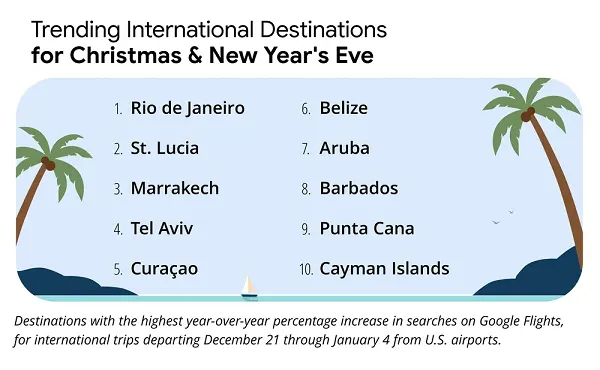24 Lesser-Known & Famous Landmarks of Japan You Won’t Want to Miss
“Monuments are the grappling-irons that bind one generation to another” ~ Joseph Joubert. If, like me, you’re planning a trip to Japan for the moment international borders reopen again, you’ll want to be prepared! Maybe you already have an...

“Monuments are the grappling-irons that bind one generation to another” ~ Joseph Joubert.
If, like me, you’re planning a trip to Japan for the moment international borders reopen again, you’ll want to be prepared! Maybe you already have an idea of landmarks in Japan you wish to see during your visit? Or are hoping to be inspired by some you’ve never heard of before?
Having visited this incredible country on several occasions, I’ve taken my time to visit many of the iconic and lesser-known Japanese landmarks and interwoven them into my easy-to-follow Japan itineraries to help you do so, too.
It never ceases to amaze me how the people of Japan manage to blend their history with the present so seamlessly. With wooden structures hailing from many centuries past only a few steps from futuristic metal towers, you’d be forgiven for thinking you were living in two worlds simultaneously.
Complete with my tips for visiting and sorted by region for easy reference, I’m sure some of the below important landmarks of Japan will find themselves working their way onto your wish list. Read on for more!
This list of Japanese landmarks will cover:
Tokyo Landmarks Kanto Region: Man-Made Landmarks Chubu Region: Iconic Landmarks in Japan Kyoto Landmarks Kansai Region: Traditional Landmarks Chugoku Region: Famous Places in Japan Kyushu Region Hokkaido RegionThis post contains affiliate links, at no extra cost to you. I may earn a small commission if you click through and make a purchase.
 Pin me to Pinterest for reference later! 📌
Pin me to Pinterest for reference later! 📌Japan is home to an endless array of man-made and naturally tall structures that can be used to get your bearings in a given area. While some date back centuries (or even millennia), it wouldn’t be Japan without modern landmarks to beautifully contrast against the old.
While there are many different types of attractions to be seen throughout this incredible country, for the purpose of this article it’s important to not lose sight of what makes a landmark just that.
Landmark Definition
noun ~ “An object or feature of a landscape or town that is easily seen and recognised from a distance, especially one that enables someone to establish their location.” – Oxford Dictionary
Without further ado, let’s deep dive into the most iconic Japanese landmarks to add to your wish list! Sorted by region:
Tokyo Landmarks
Tokyo SkyTree
Sumida, Tokyo
A relatively new icon of the city, Tokyo SkyTree 東京スカイツリー will be celebrating its 10th birthday in 2022. Its metal latticework stretches 634 metres above Tokyo’s skyline, making it visible from many points throughout the metropolis.
On a ferry from Minato to Asakusa, an ojisan おじいさん (Japanese grandfather) sat beside me and wanted to practice his English. He explained to me the 634 metres height for the SkyTree was deliberate, as these numbers “mu,” “sa,” “shi” in Japanese have a symbolic meaning for the area. Today’s location of the tower was once the ancient Musashi Province in the 6th century. How cool is that!
As I’ve already mentioned, the past and present have an unbreakable bond in this country. The Tokyo SkyTree is one such example when you’re exploring the old Asakusa neighborhood. It’s a unique feeling to have an old-world charm wash over you whilst the modern SkyTree casts a watchful eye over the old streets in the area.
TIP: When visiting the SkyTree, be prepared for a huge selection of shops, restaurants, cafes and the observatory itself. You could easily spend an entire day here and may even see Mt Fuji in the distance. It’s best to buy tickets in advance to avoid lengthy queues, too!

Shibuya Scramble Square & Shibuya Crossing
Shibuya, Tokyo
Completed in time for the ill-fated Tokyo 2020 Olympics, Shibuya Scramble Square 渋谷スクランブルスクエア is one of the newest skyscrapers in Japan’s capital. It’s a great Tokyo landmark to use to navigate to JR Shibuya Station – considering it’s a whopping 47 storeys high directly above it!
Located at the very top of the building is Shibuya Sky 渋谷スカイ. I was fortunate to have visited before Japan closed its borders in March 2020, and my goodness, it blew my expectations out of the water. With a bird’s eye view over Shibuya Crossing itself, you can sit and watch the busiest crossing in the world as 3,000 people manoeuvre across it at any time.
Aside from being home to Japan’s largest outdoor rooftop observatory, the building itself hosts over 200 restaurants and shops. There is certainly something for everyone, but allow plenty of time to make your way out as it can take a while going down 8 floors of escalators – I learnt this the hard way!
TIP: Don’t forget to look up when riding the express elevator to the 46th floor to Shibuya Sky, its ceiling has a very mesmerising display.


Tokyo Tower
Minato, Tokyo
This striking red and white tower can be seen from many areas of Tokyo. It’s not only an icon of the city, but of the entire country!
Inspired by France’s Eiffel Tower, the Tokyo Tower 東京タワ is a symbol of rebuilding, figuratively and literally speaking, after the damage done to the city during World War II. It was made from salvaged metal scraps after the war and today is a communications tower.
Since 1957, Tokyo Tower was the tallest structure in Japan until it was surpassed by the Tokyo Skytree in 2012. One of my favourite places to see it is on Akabanebashi street, as well as peering out from behind Zojo-ji and Shiba Park, all in Minato.
TIP: It’s possible to visit Tokyo Tower’s own observation deck for incredible views over the city! Buy your tickets in advance to organise your visit.
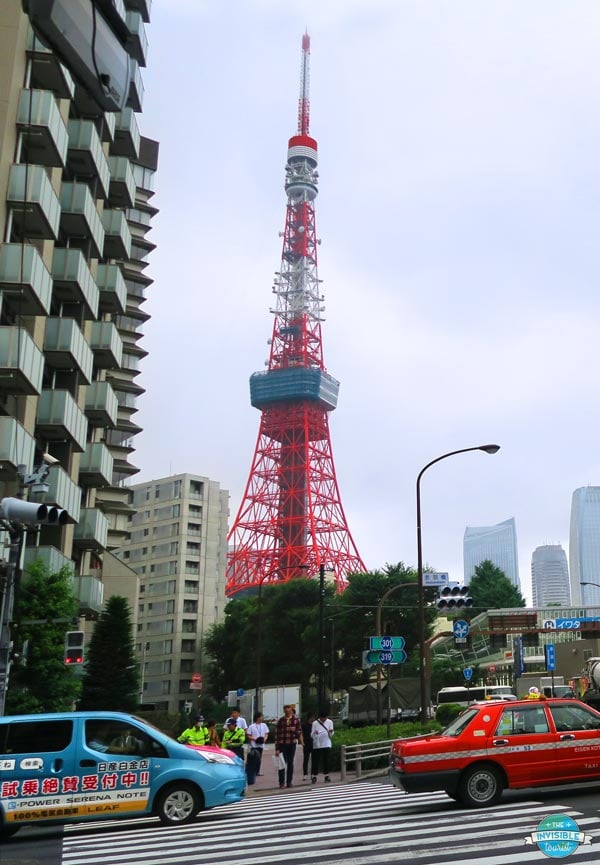

Senso-ji
Asakusa, Tokyo
With its giant red lantern suspended from the Kaminarimon gate, Senso-ji 浅草寺 is a historical Japanese landmark that should not be missed. I seem to end up popping in every time I’m in Tokyo, each visit being as charming and memorable as the previous.
Senso-ji is the oldest temple in Tokyo, dating back to 645 AD. The complex was built in this location due to an ancient legend that claimed two brothers found a statue of Kannon (Buddhist goddess) floating in the adjacent Sumida River, and took this as a sign to build the temple in her name.
When visiting the temple, for the full experience enter by walking beneath the Kaminarimon (Thunder Gate) before strolling along Nakamise-dori. Lined with hundreds of street food stalls, shops selling various handicrafts and much more, this street will lead you to the second Hozomon gate, main hall and gorgeous red pagoda.
Keep your eyes peeled for another Tokyo landmark from here – the Tokyo SkyTree over in the distance.
TIP: For one of the best views of Senso-ji from above, head to the Asakusa Cultural Information Centre located directly opposite Namkamise-dori shopping street leading up to the temple’s main hall and pagoda.

Rainbow Bridge
Odaiba, Tokyo
Arching over Tokyo Bay, the Rainbow Bridge レインボーブリッジ gets its name as it’s lit up in rainbow colours at night. It’s quite cool to think the bridge uses solar power to create a colourful spectacle in the evenings!
This suspension bridge links Tokyo’s mainland in the north to the man-made islands in the south that make up Odaiba. It’s a great backdrop against Tokyo’s own Statue of Liberty – more on this below.
TIP: When staying in the Minato neighbourhood, I personally love catching the monorail from Hamamatsucho station to head over the Rainbow Bridge to Odaiba and back! With only 15 minutes travel time, the monorail is also a very handy way to get into Tokyo city from Haneda Airport in the south. If you’re wondering where to stay in this huge city, take a look at my popular Tokyo itinerary for reviews on 4 hotels I’ve personally stayed in to help you decide.

Statue of Liberty
Odaiba, Tokyo
Did you know Tokyo has its own Statue of Liberty 自由の女神像(台場)? Much like New York’s iconic statue was a gift from France, Tokyo’s replica was donated by France in 1998 to celebrate “The French Year in Japan.”
The statue was only meant to be temporary, but it was so popular amongst Tokyoites it became a permanent fixture beside Tokyo Bay. The Statue of Liberty is one of the more unusual landmarks in Tokyo and one you likely didn’t expect.
TIP: You’ll get some fantastic photos of her from the elevated wooden boardwalk! Find out more unusual attractions in my guide to hidden gems in Tokyo.

Kanto Region: Man-Made Landmarks in Japan
Toki no Kane, Kawagoe
Kawagoe, Saitama
This lesser-known landmark of Japan is one of my personal favourites. Located within the Kora no Machi (Old Town) area of Kawagoe, Toki no Kane 時の鐘 is a beautifully preserved wooden bell tower that has marked the time since the 17th century. The bell itself weighs in at 700kgs!
If you’re familiar with Edo Wonderland in Nikko, you’ll recognise that its wooden bell tower appears to have been modelled from Toki no Kane.
TIP: Read more about Toki no Kane in my detailed Kawagoe day trip itinerary.
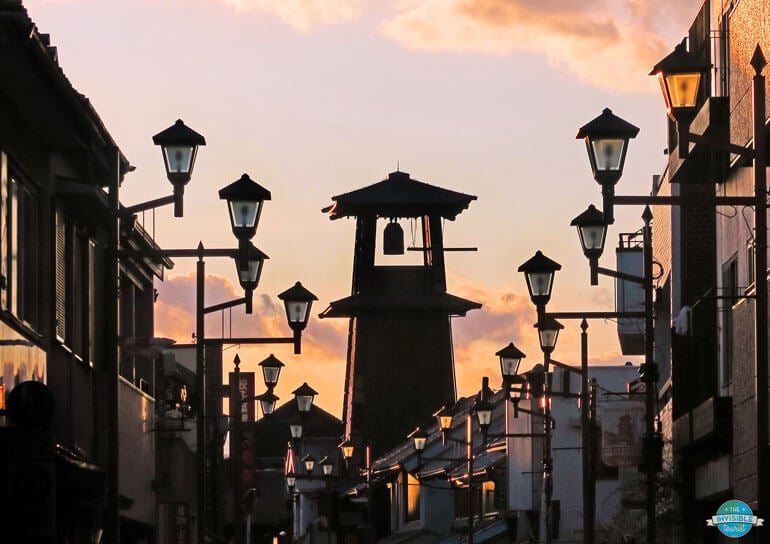
Daibutsu of Kamakura
Kotoku-in, Kamakura
One of the most recognisable Japanese landmarks symbolising religion is the Great Buddha of Kamakura 鎌倉大仏. Would you believe this giant bronze
daibutsu was once sheltered by a hall within Tokoku-in temple complex?
The hall was eventually destroyed over time by natural disasters, leaving the statue exposed to the elements today. I guess this isn’t too surprising when you find out it dates back to 1252 AD!
After wanting to visit for so long, I gasped when I first lay eyes on this Kamakura landmark. It’s possible to walk inside the giant Buddha and see the structure from the inside. I stood in complete awe at the ancient construction techniques.
As the second largest bronze Buddha in Japan (after the one within Todai-ji in Nara down the page), it is considered the most handsome and really is a must see during your time in Kamakura.
TIP: Interested in visiting this beachside town? take a look at my Kamakura day trip itinerary from Tokyo for what to expect!
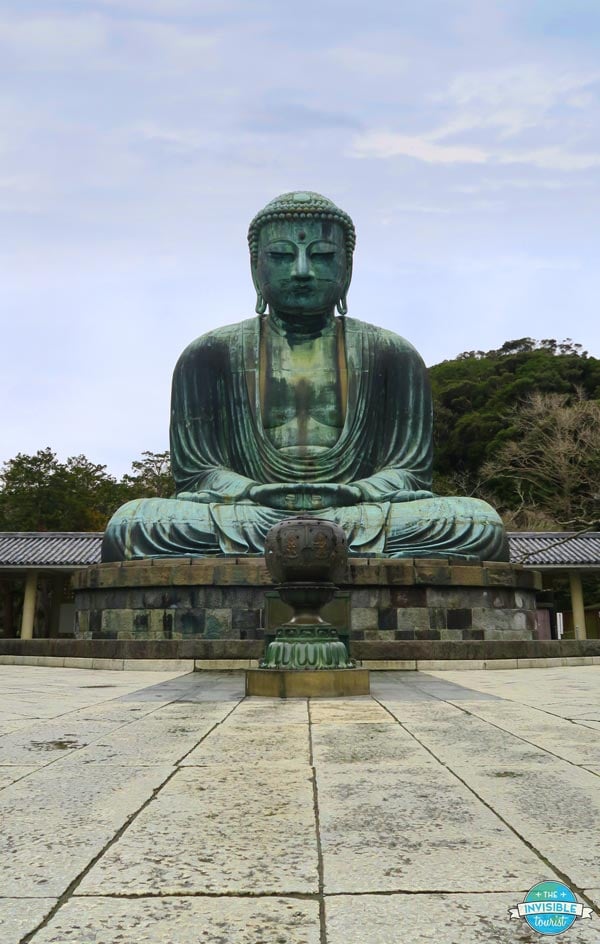
Chubu Region: Iconic Landmarks in Japan
Mount Fuji
Yamanashi & Shizuoka Prefectures
Perhaps one of the most highly recognised landmarks of Japan is the beloved Mt Fuji 富士山. Affectionately known as Fuji-san, she’s very shy throughout most of the year and usually hides beneath a cloudy blanket.
But, if you’re fortunate enough to see her during the 80 days of the year where she is clearly visible, you may be able to see her from over 300 kilometres away!
One of the best places to view Mt Fuji is from Lake Kawaguchiko in the Fuji Five Lakes region. While it takes around two hours by bus to get there from Tokyo, the views are far more rewarding than those from Hakone, in my opinion.
TIP: Interested in seeing Fuji-san during your visit? Learn more about my experience in my detailed guide to a Mt Fuji day trip from Tokyo.


Chureito Pagoda
Arakurayama-Sengen Park, Fujiyoshida
Along with the grand torii of Miyajima further down the page, the views from Chureito Pagoda 忠霊塔 are the ones you’ll see gracing the cover of every glossy travel brochure about Japan. And it’s easy to see why!
Surrounding scenery changes from pink sakura blossoms of spring to the red leaves of autumn, framing the famous pagoda and creating beautiful photo opportunities.
On a fine day, the view from Chureito Pagoda will take your breath away as you’ll be spoilt with an uninterrupted view of Mt Fuji basking in her glory. This exact scene is an exemplary visual representation of Japan – temples, nature, cityscapes and the country’s most sacred mountain peak.
TIP: Chureito Pagoda is one of the most internationally recognised landmarks in Japan – but be prepared for a massive hike up 400 steep, stone stairs to see it overlooking Mt Fuji!

Matsumoto Castle
Matsumoto, Nagano Prefecture
Known as the “Black Crow”, Matsumoto Castle 松本城 is one of the most beautifully-preserved historic landmarks in Japan. Dating back over 500 years, you’re able to visit inside the main keep and discover artefacts and weapons on display.
As the interior is the original keep, you’ll quickly see a number of supporting wooden beams that were ravaged by fire in the past. The top floor will reward you with sweeping views over Matsumoto city and the surrounding mountain ranges. Perhaps even have your photo taken with a modern-day samurai or geisha strolling the castle grounds!
Be warned though, as I explain in my 3 week Japan itinerary the stairs to climb the five storeys are very steep – a 61° incline. If you’re short like me you’ll find yourself skidding down on your bottom! I have no idea how the ninjas used to scale these stairs in a hurry, but they did.
TIP: As with many temples and castles in Japan, remember to take your shoes off before stepping foot on the wooden floors. Staff will hand you a bag to place your shoes in and carry as you explore the castle.
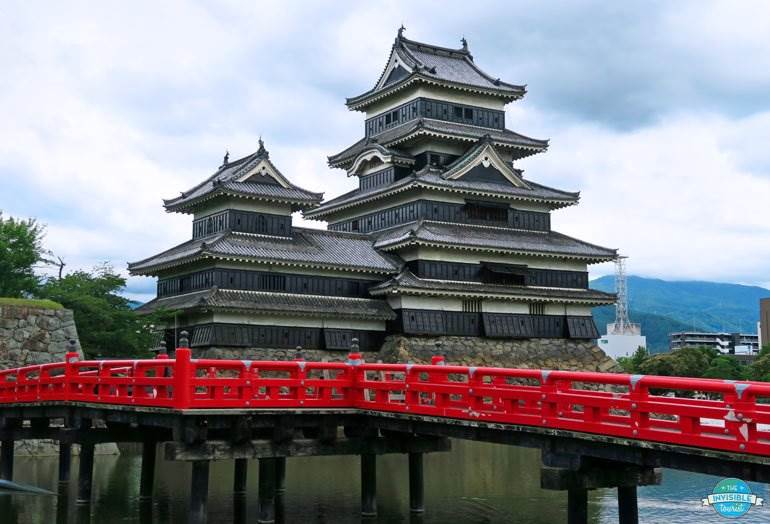
Kyoto Landmarks
Yasaka Pagoda
Higashiyama, Kyoto
There’s no doubt Yasaka Pagoda 八坂の塔 is one of Kyoto’s most famous and sought-after photo opportunities. Standing here impressively for over 600 years, Yasaka Pagoda is all that is left of Hokan-ji, the previous ancient temple in this area.
Five-storey Yasaka Pagoda is a great landmark in Kyoto to help you get your bearings in the Higashiyama area. There’s something quite magical about it at sundown, too.
As Mother Nature paints the sky in brilliant shades of oranges and reds, it’s humbling to think how many times the pagoda has witnessed this daily event in its lengthy lifetime.
TIP: From the Gion district, you may be lucky enough to catch a glimpse of old against new as Kyoto Tower makes a contrasting backdrop beyond the pagoda here.
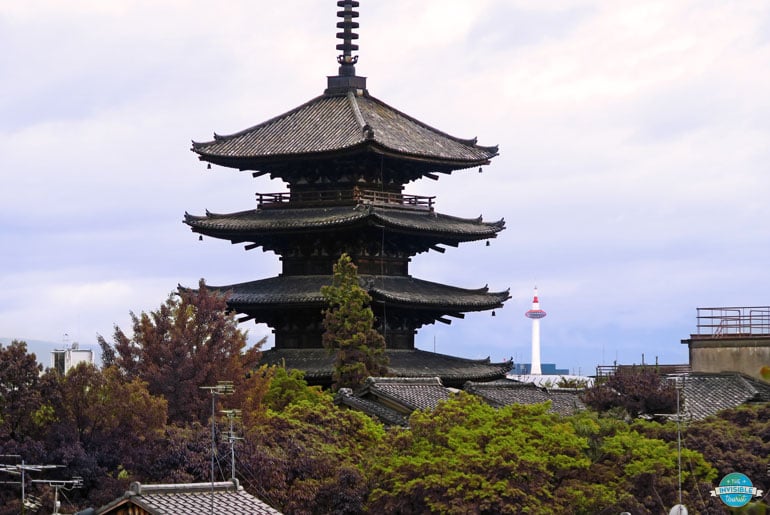
Kyoto Tower
Downtown Kyoto
Dating back to the 1930’s, the futuristic Kyoto Tower is unmissable once you step outside JR Kyoto Station in the city’s downtown area. I’d say it’s one of the lesser-known Japan landmarks.
Believed to represent either a lighthouse or candle depending on whom you speak to, the tower can be seen from many areas throughout the city, especially from the hilly outskirts.
It’s quite a contrast compared to the dear old Yasaka Pagoda, wouldn’t you agree? Kyoto Tower is also home to an observation deck and is the tallest tower in the city, measuring 131 metres high.
TIP: On a clear day you’ll be able to see Kyoto Tower from Kiyomizu-dera, the ancient city’s beloved water temple that dates back to 780 AD. The sweeping views from this Buddhist temple are unforgettable! Find out more in my guide to taking a private walking tour and traditional tea ceremony in Kyoto.

Kinkaku-ji
Kita, Kyoto
Known for its golden exterior, the former shogun villa of Kinkaku-ji 金閣寺 is a very popular tourist attraction in Kyoto. Did you know 20 kilograms of gold leaf was used to decorate its exterior? It’s one of the most famous Japanese landmarks and is definitely one to add to your Kyoto itinerary!
TIP: As this is one of the city’s most-visited attractions, I’d advise on visiting in the later afternoon once the crowds of day-tripping tourists have left for the day.

Arashiyama Bamboo Grove
Arashiyama, Kyoto
Known to locals as Sagano Bamboo Forest, the lush greenery of Arashiyama Bamboo Grove 嵐山竹林の道 is synonymous with Kyoto. The rustling of its leaves and gentle creaking of bamboo stems in the breeze is considered one of “one hundred must-be-preserved sounds of Japan.” Isn’t that a lovely idea!
TIP: Another huge tourist drawcard to Kyoto, Arashiyama Bamboo Forest can become extremely overcrowded at times. It’s certainly NOT the only bamboo grove in the city, though! My full Kyoto itinerary and guide to Kyoto hidden gems explain where you can find overlooked bamboo groves without the crowds.

Kansai Region
Osaka Castle
Chuo, Osaka
With the modern bright, flashing lights vying for your attention in Dotonbori, it can be easy to forget the centuries-old origins of Osaka. This is where the stunning Osaka Castle 大坂城 comes in to serve as a reminder of the city’s samurai past, being one of the major landmarks of Japan.
While the wooden castle changed hands several times throughout the centuries (including being burnt to ashes on separate occasions), the Osaka-jo we see today is not the original.
However, the extensive boulder walls guarding the castle date back to the 17th century. Regardless, the restoration work is absolutely stunning!
TIP: Don’t miss the museum inside that details Osaka’s history and the lovely observatory from the castle’s very top. My Osaka itinerary has all the details!
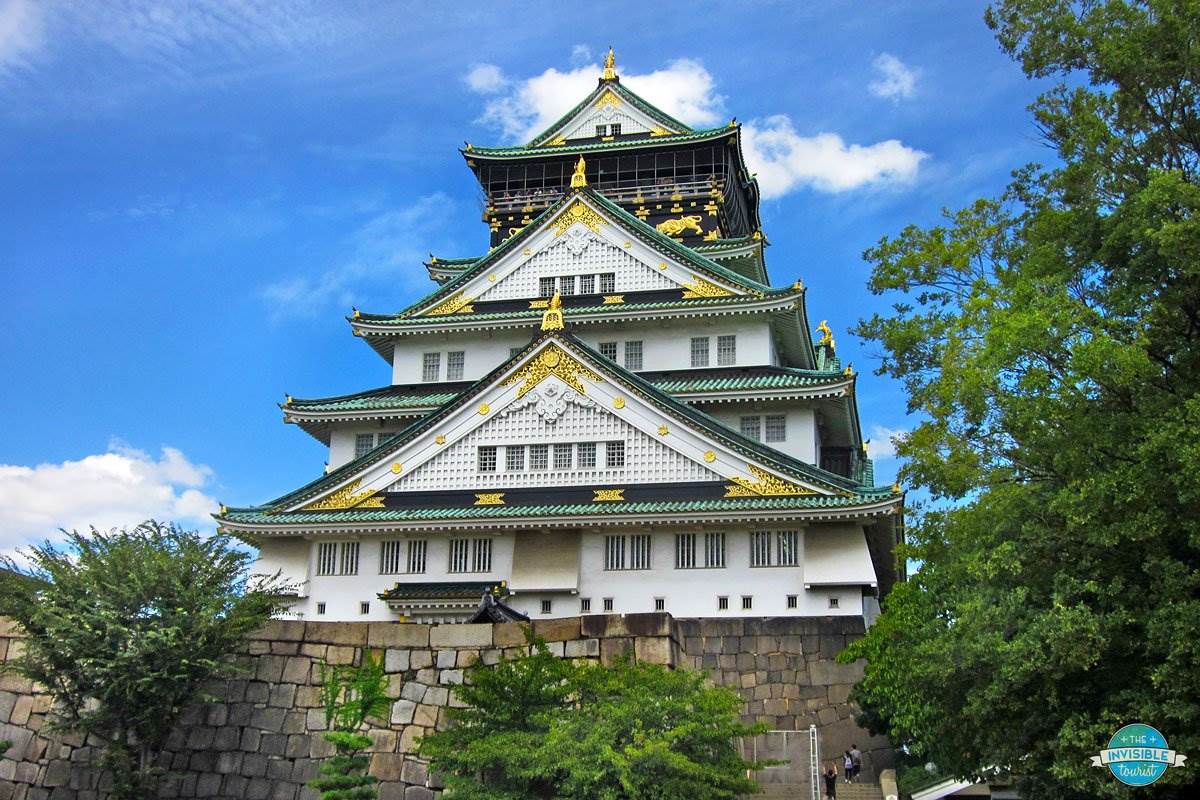
Todai-ji Nara
Nara Park, Nara Prefecture
Proudly standing in this location since the 8th century in the heart of Japan’s ancient capital, Todai-ji 東大寺 or the “Great EasternTemple” is a UNESCO World Heritage site housing a 16 metre-high golden Daibutsu (giant Buddha).
Not only does Todai-ji hold the title of largest wooden landmark in Japan, until recently it was the world’s tallest wooden structure. And, there’s not a single nail holding it together! Would you believe the Todai-ji standing before us today is only two-thirds of its original size prior to 1692?
With free-roaming sacred deer grazing on the grassy grounds nearby, Todai-ji is certainly a must-see landmark of Japan.
TIP: The influx of tourists to Nara in recent years meant the wild deer were being fed “human” food, making them sick (and aggressive). My findings on overtourism in Japan details what you should feed them instead, and how you can avoid the crowds.


Himeji Castle
High on a hillside above the town below, Himeji Castle 姫路城 is referred to as the “White Heron”, resembling a bird about to take flight. It’s visible as soon as you step outside JR Himeji Station and can even be seen from the shinkansen if passing through the city en route on the JR East lines.
Despite its first structures being built in the 14th century, did you know the castle has never experienced fire? During WWII, the city of Himeji was almost completely destroyed by air raids from allied B-29 bombers, where 9,129 bombs fell on the city over 2 hours.
However, residents had “hidden” the castle under a huge net to camouflage it from the pilots. In the aftermath through smouldering debris, residents considered it a miracle the castle remained untouched, giving them hope for their future.
What we see today of Himeji-jo is one of only 12 remaining original castles in the country. Along with Matsumoto Castle, it’s considered a national treasure of Japan due to its incredible history. It’s such an impressive Japanese landmark castle, I am dying to visit!
TIP: Himeji city is one of several great day trips from Osaka!

Seiganto-ji Pagoda & Nachi Falls
Kii Peninsula, Wakayama
Marking the end of the ancient Kumano Kodo pilgrimage trail, the bright three-storey pagoda of Seiganto-ji 青岸渡寺 is another religious treasure. Against the natural rocky backdrop of Nachi Falls 那智滝, you could say this location is a two-in-one landmark of Japan!
Seiganto-ji is one of the many UNESCO World Heritage sites in the country. It’s also an Important Cultural Property of Japan due to its incredible history. Buddhists believe the temple was founded in this exquisite location by an Indian monk in the 4th century.
I’m yet to visit this stunning location, but you can bet it’s on my Japan bucket list.
TIP: Along with many other lesser-known destinations, Nachi Falls is featured in my guide to Japan off the beaten path.
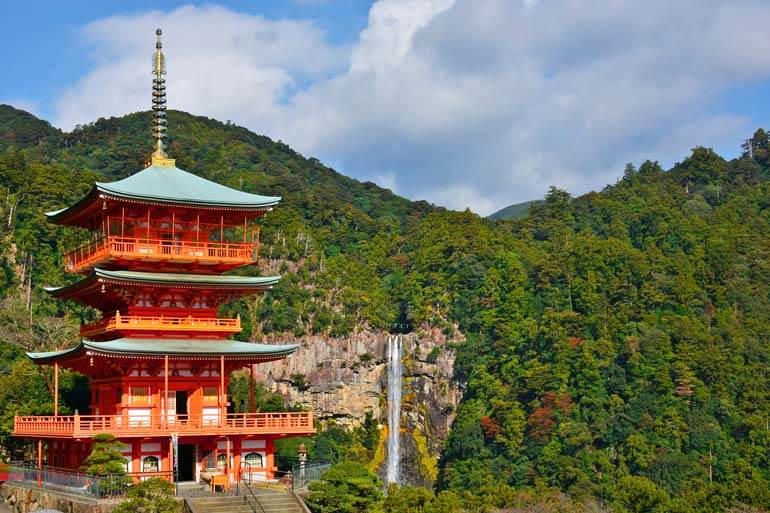
Chugoku Region: Famous Places in Japan
Hiroshima Atomic Bomb Dome
Hiroshima City, Hiroshima Prefecture
Bearing scars from the 4000°C nuclear blast during WWII, the eerie Atomic Bomb Dome (or Hiroshima Peace Memorial) is the most prominent landmark in the city. A former Convention Hall, its location alongside the Motoyasu River made it an ideal target for allied B-29 bombers on 6 August, 1945.
After the devastation caused by the blast, the entire city was rebuilt around the Atomic Bomb Dome (A-Bomb Dome 原爆ドーム or Genbaku in Japanese). There were plans to demolish it completely, but it was decided to keep the damaged structure as a reminder of the past, yet an inspiring one for hope in the future that such atrocities will never be repeated.
As well as many other structures dedicated to world peace in the city such as the Peace Memorial Museum, the Hiroshima Atomic Bomb Dome is a Japanese landmark I believe everyone should see once in their lifetime, if given the chance.
TIP: Learn where to find a number of items from before the blast hiding in plain sight in my guide to things to do in Hiroshima.
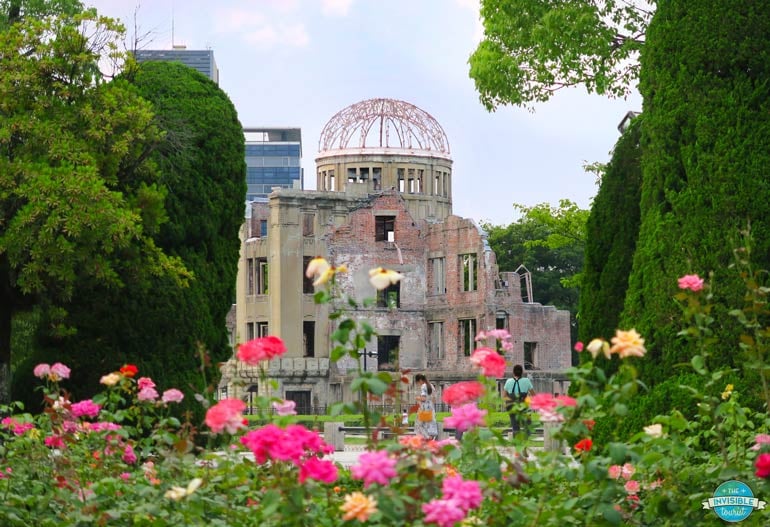
Miyajima Torii
Miyajima Island, Hiroshima Prefecture
There aren’t many landmarks in Japan that are as iconic and famous as the grand torii gate of Itsukushima Shrine on Miyajima Island. Located 45 minutes’ from the Hiroshima Peace Park by express ferry, Miyajima’s grand torii gate is a symbol of Japan and is a UNESCO World Heritage site.
Depending on the time of day, the vermillion posts making up the gate appear to float gracefully on the water’s surface, a truly unique spectacle. It’s not the worst thing if your visit aligns with the low tide, though – the benefit is being able to walk right beneath the torii to admire it up close!
TIP: If you hope to visit the Grand Torii someday, find out why using the Japan Rail Pass may NOT be the best option to get there. Find out why in my guide to Hiroshima to Miyajima by ferry from the Peace Memorial Park and other locations.
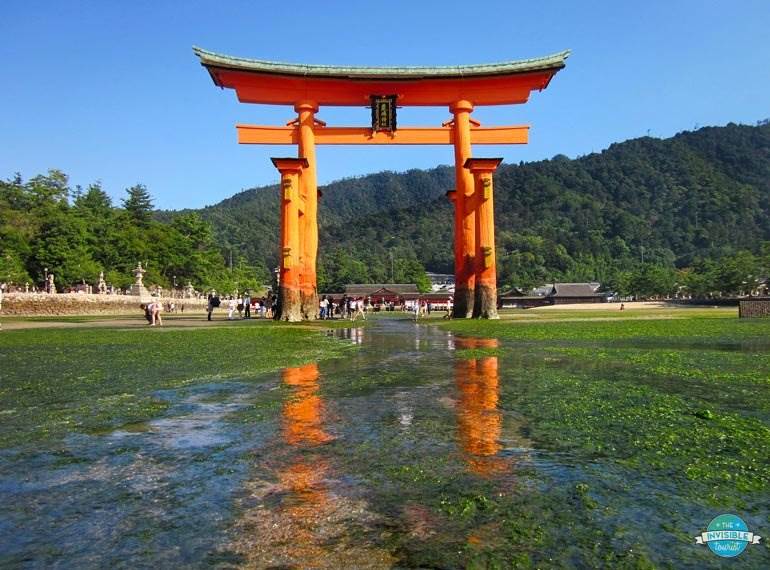
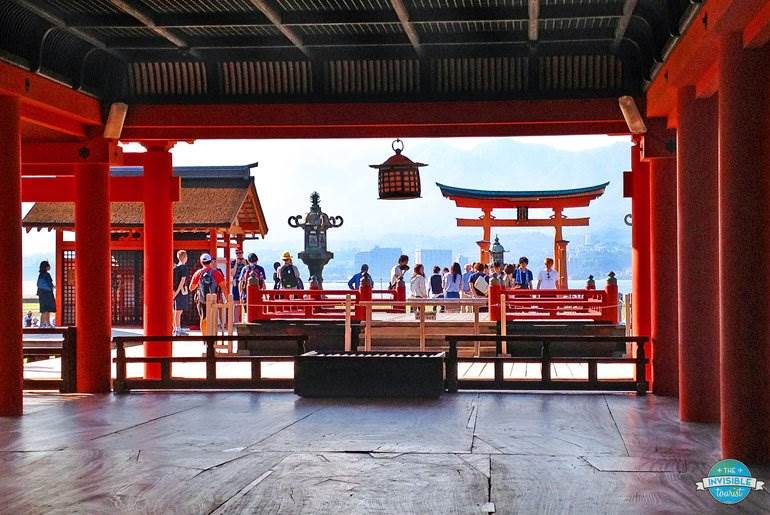
Kyushu Region
Takachiho Gorge
Nishiusuki, Miyazaki Prefecture
Its emerald green hues make this spot one of the most stunning natural landmarks of Japan! If you’re looking to explore off the beaten path in Japan, this pristine location is just for you.
Lesser-known to foreign tourists, Takachiho Gorge is a lovely destination to get your dose of shinrin yoku (find out the meaning to this and more in my guide to beautiful Japanese words).
While I am yet to visit this gorgeous location myself, it’s high on my list of places to experience on my next trip to Japan.
TIP: It’s possible to be organised by booking a boat ride in advance to experience the waterfall up close.

Hokkaido Region
Japan’s northernmost island of Hokkaido is a region I am yet to explore. But you can bet in true Invisible Tourist fashion, I’ve already researched them so I am prepared for when I get the chance to visit someday!
Goryokaku Tower & Star Fort
Hakodate, Oshima Subprefecture, Hokkaido
Featuring a five-pointed star moat guarding a centuries-old fortress, is this not one of the most beautiful sights during spring in Japan?
Best viewed from nearby Goryokaku Observatory, Hakodate Star Fort (or Goryokaku 五稜郭 in Japanese) is one of the prettiest landmarks in Japan when its explosion of pink hues transforms the symmetrical formation during cherry blossom season.
Dating back to 1866, the fort was built to ward off possible invasion from Russia at the time. Today, it’s a public park to be enjoyed by everyone.
TIP: If you’re hoping to visit Japan during springtime, cherry blossoms come to life at different times throughout the country. Find out when is the best time to visit Japan for cherry blossoms by region in my dedicated article.

Sapporo Tower
Odori Park, Sapporo, Hokkaido
Quite similar in appearance to its sister down in Tokyo and designed b the same architect, Sapporo TV Tower さっぽろテレビ塔 was also built after WWII. In order to draw attention to the tower, it was decided that digital clocks be installed on each side.
If you’re a fan of Godzilla, you may recognise the tower in the Godzilla vs. King Ghidorah and Godzilla vs. SpaceGodzilla films produced in the 1990’s. What’s more iconic than Godzilla against a popular landmark of Japan?

Concluding these beautiful landmarks of Japan
While some may suggest that Jigokudani Snow Monkey Park in Nagano, Dotonbori in Osaka, Fushimi Inari Taisha in Kyoto and Shirakawa-go nearby Takayama are landmarks, to me personally I don’t feel as they truly fit the definition of a “landmark” at the beginning of this article. But that’s just my humble opinion! What are your thoughts?
That completes this epic list of Japanese landmarks! I hope these iconic and lesser-known landmarks of Japan have given you some inspiration for your future trip planning. How many had you heard of? Let me know in the comments below!
If you found this helpful, please share, save t for later and come and join me on Facebook, Pinterest, TikTok or Instagram for more!
Until next time,

Do you love Japanese sweets, snacks and candies?
Read my Tokyo Treat review and get popular Japanese snacks delivered here, or read my Sakuraco review and get traditional Japanese sweets delivered here!
This guide to landmarks in Japan contains some affiliate links, at no extra cost to you. I may earn a small commission if you decide to make a purchase and if you do, thanks for your support! This helps with the costs of running my blog so I can keep my content free for you. As always, I only recommend a product or service that I genuinely love and use myself!
Australian-based Alyse has travelled "The Invisible Tourist Way" for thirteen years and hopes to encourage fellow travellers to do so, too. Based on her travels to 250+ cities across 32 countries, through her blog she shares passionate advice about responsible travel, history and preserving local cultures for more enriching experiences. Her dreams? Always about the next destination and how to make the most of it by "blending in".

 Kass
Kass 








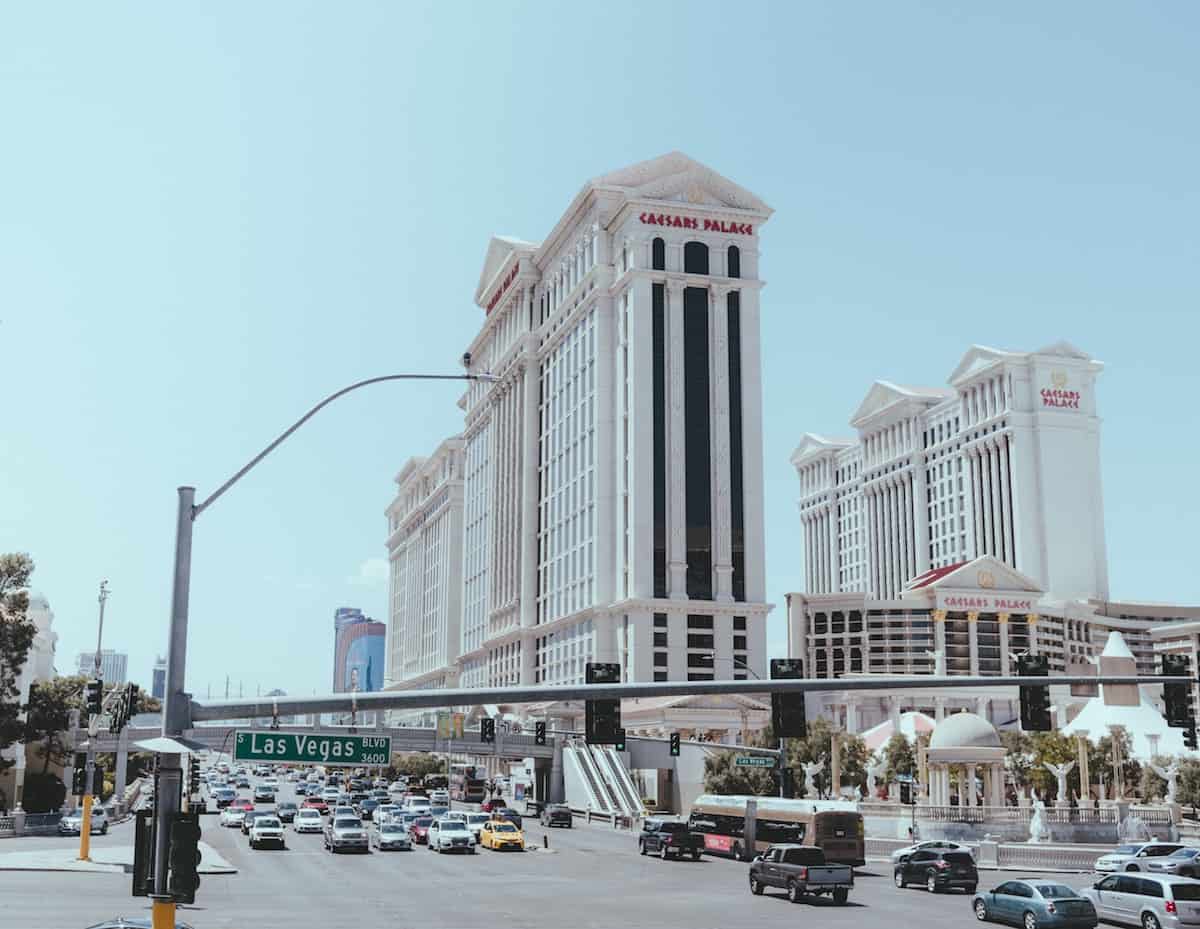

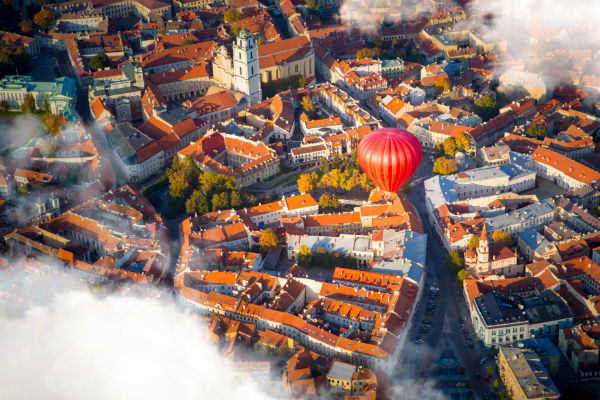

















.jpg&h=630&w=1200&q=100&v=f776164e2b&c=1)
